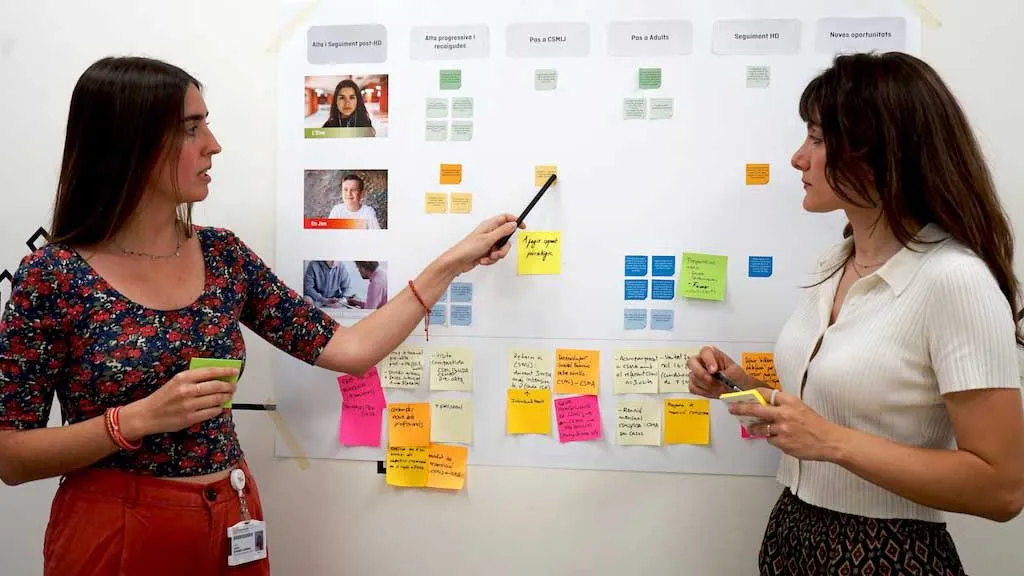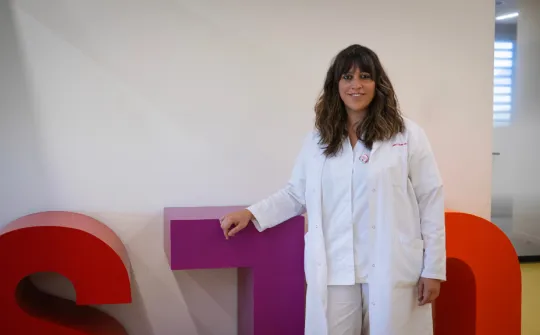Sant Joan de Déu works with staff, patients and their families on projects for improvement through the E=MC2 model

The Hospital merged the LEAN Healthcare and Design Thinking methodologies two years ago as the basis of its model for improvement.
SJD Barcelona Children's Hospital has been able to improve healthcare processes, structures, spaces, care models and new services thanks to a participatory model in which staff, patients and their families play a key role in identifying their needs, co-designing new approaches, and following up and assessing patients.
The E=MC2 model is an amalgam of the staff's know-how and experience, and it explores the experiences of users – patients and their families – in order to introduce changes and improvements, as well as to consolidate them by redesigning the Hospital’s procedures. The aim is to work in order to achieve excellence in all fields of healthcare.
“This model contributes to increasing the value of care, allows better results to be obtained with a greater degree of certainty, helps efficiency and sustainability, and improves the experience of users. Furthermore, it acts as a leverage for change to promote a culture of integral care focused on people, explained Mercè Jabalera, Director of Quality and the Patient Experience at SJD Barcelona Children's Hospital.
The projects taken on using the E=MC2 model are prioritised in order of strategic requirements, the need for new buildings or the refurbishment of old ones, the immediate need for improvement flagged up in terms of clinical results, organisational outcomes, the patient experience and the demands of staff with a view to improving their work.
An interdisciplinary team under the supervision of the Director of Quality and the Patient Experience facilitates this approach by using lean methodologies and other qualitative ones such as design thinking and, more recently, the listening to patients method. In addition, the team helps to develop each project in different stages:
- reaching an understanding with staff in the objective of a project and its intended impact; selecting the sample of patients and staff who are to participate in it; and setting the stages, techniques and timeframe for its execution.
- It examines the difficulties and valuable aspects encountered by patients, their families and the staff.
- It comes up with ideas with staff, patients and their families.
- It designs plans for improvement and assessment methods.
The E=MC2 model helps redesign the healthcare model and to obtain better results by responding to the needs of patients and staff
Around 140 projects in ten years
To date, work has been done on a total of 139 projects that cover all fields of care:
- Healthcare processes: Amongst many others, a review has been conducted of the care given during pregnancy and childbirth in order to improve the experience of pregnant women; the process of transitioning young patients to acute care has been redesigned; the approach taken to patients with specific needs when they are admitted to the Emergency Department has been improved; and the focus and approach for dealing with obesity has changed with the aim of increasing the rates of patients sticking to their treatment.
- Organisational and functional improvements: In order to optimise efficiency, the management of staff and improve the way they do their jobs, work has been done with several medical departments to shorten waiting times for doctor’s appointments, waiting lists for operations and to streamline hospital discharges. To this regard, the Hospital has managed to reduce waiting times for the collection of blood samples, the admission times to wards from A&E and the waiting time for an appointment to be arranged at all departments.
- Structures and spaces: Work has been done on the building and refurbishment of the SJD Pediatric Cancer Center Barcelona, the new Central Surgical Wing, the new Intensive Care Unit, the new children’s hospital rooms and the Women’s Department, amongst others.
- Care models and new services: The E=MC2 model helps redesign the healthcare model and set up new programmes to obtain better results by responding to the needs of patients and staff. Some examples are the introduction of an advanced practice nurse in neurosurgery, which has made it possible to reduce the number of visits by consultants. Work has also been done on a new care model at mental health day hospitals and on a new care unit for patients who have had cancer and are currently being followed up.
This model is helping transform the organisation’s culture
A total of 34.5% more thanks than complaints
Overall, the improvements introduced have made it possible to enhance the patient experience and the rating patients and their families have given, namely, an NPS score of 76.18 in 2024. What is more, SJD Barcelona Children's Hospital obtained 34.5% more words of thanks (979) than complaints (338), as well as having secured various accreditations for its expertise in highly complex patients.
Beyond the specific improvements made in each of the medical fields and departments, this model is helping to transform the organisation’s culture by concentrating on the needs of patients and their families, thus improving safety, humanistic care and health outcomes. “It is important to highlight that the involvement and commitment of staff is essential to make the roll-out of this model a reality. Furthermore, the engagement of patients and their families helps us to focus on what is really important and on what has the greatest impact on their experience”, concluded David Nadal, Assistant Director of Quality and the Patient Experience.



